2 Weeks Notice Letter: How to Write It Professionally (With Samples)
Published: 9 Feb 2025
Leaving a job is a big step, and it’s important to do it the right way. Whether you’re moving on to a new opportunity, switching careers, or making a personal decision, knowing how to write a 2 weeks notice letter for work is essential. A well-written notice letter ensures that you leave on good terms, maintain professionalism, and keep doors open for future opportunities.

In this guide, we’ll walk you through the process of writing a 2 weeks notice letter step by step. You’ll learn when to submit it, what key elements to include, and how to avoid common mistakes. Plus, we’ve included a sample letter to make writing your own even easier. By the end of this article, you’ll have everything you need to resign professionally and respectfully.
When to Submit a 2 Weeks’ Notice
So, you’ve decided to leave your job—great! But when exactly should you submit your 2 weeks’ notice letter? The timing matters more than you think. Giving notice at the right time helps your employer plan ahead and ensures you leave on good terms. Here’s what you need to keep in mind:
- Stick to the Standard Rule—As the name suggests, you should give your employer two weeks’ notice before your last working day. This gives them time to find a replacement or adjust workloads.
- Check Your Company Policy – Some companies have specific rules about notice periods. Higher-level positions may require more than two weeks, so it’s always a good idea to review your contract or talk to HR before submitting your resignation.
- Be Mindful of Big Projects – If you’re in the middle of an important project, consider its impact. Leaving in the middle of a deadline could put extra pressure on your team, so try to time your resignation in a way that causes the least disruption.
- Consider Your Relationship with Your Employer – If you have a good relationship with your boss and want to leave on excellent terms, you can offer to stay a little longer if needed. On the other hand, if you’re in a toxic work environment, you may want to submit your notice and mentally prepare for an early exit (some companies let employees go immediately after they resign).
- Give Notice at the Start of the Week – If possible, submit your 2 weeks’ notice on a Monday or Tuesday. This allows for smoother communication and planning, rather than dropping the news on a Friday when things are winding down.
At the end of the day, the goal is to leave professionally and respectfully. Picking the right moment to hand in your notice can make a big difference in how your departure is handled.
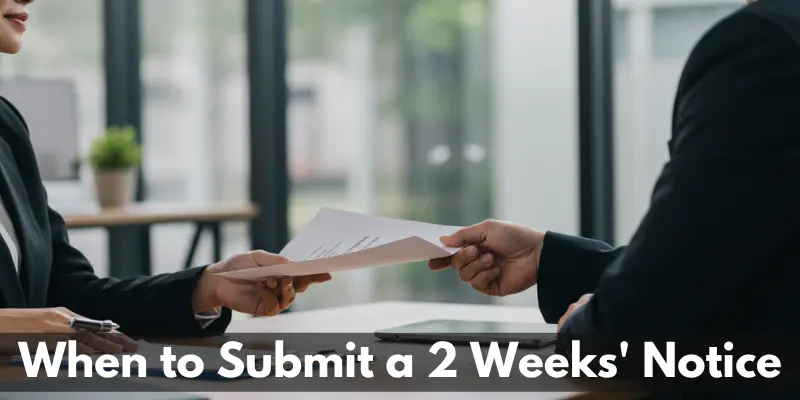
Key Elements of a 2 Weeks Notice Letter
A solid 2 weeks notice letter should include the following key elements:
- Formal Salutation: Address your supervisor or manager by name.
- Clear Resignation Statement: Be upfront about your decision to resign and the exact date of your last day.
- Expression of Gratitude: Thank your employer for the opportunity and experience.
- Offer Help During Transition: Let them know you are willing to assist with the handover of your responsibilities.
Step-by-Step Guide to Writing Your 2 Weeks Notice Letter
Alright, now it’s time to actually write your 2 weeks notice letter. Don’t worry—it’s easier than you think! Just follow these simple steps, and you’ll have a polite, professional, and well-structured letter in no time.
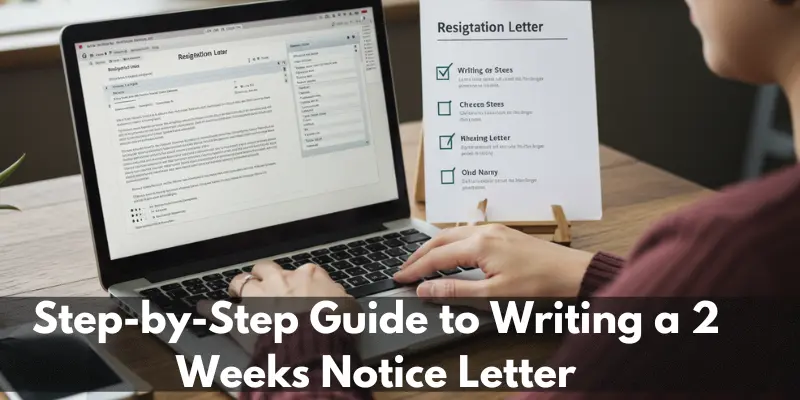
Step 1: Start with a Formal Header (For Physical Letters Only)
If you’re writing a printed letter, begin with:
- Your Name
- Your Address
- Date
- Manager’s Name & Company Name
- Company Address
If you’re sending an email, you can skip this step and move to the next one.
Step 2: Add a Clear Subject Line (For Emails Only)
If you’re sending your notice via email, make sure your subject line is clear and professional. Here are a few good examples:
Subject: Resignation Notice – [Your Name]
Subject: Two Weeks’ Notice – [Your Name]
Subject: Formal Resignation – [Your Name]
This ensures your manager immediately understands what the email is about.
Step 3: Address Your Manager Properly
Always start with a formal greeting:
Good Example:
“Dear [Manager’s Name],”
Bad Example:
“Hey Boss,” (Keep it professional.)
Step 4: Clearly State Your Resignation
Your first sentence should get straight to the point and include your last working day.
Example:
“I am writing to formally resign from my position as [Job Title] at [Company Name]. My last working day will be [Exact Date], in accordance with my 2 weeks’ notice period.”
Bad Example:
“So, I’ve been thinking… I might leave soon, but I’m not sure. Let’s talk.” (Be clear and professional.)
Step 5: Keep It Professional and Positive
Even if you’re not happy with your job, don’t make it personal. A simple thank-you shows gratitude and professionalism:
“I truly appreciate the opportunities I’ve had at [Company Name]. I’ve learned valuable skills and worked with some great people, which I will always be grateful for.”
A little appreciation goes a long way in maintaining good relationships.
Step 6: Offer to Help with the Transition
Show that you’re leaving on good terms by offering assistance. Even if they don’t take you up on it, it looks professional.
Example:
“I’d be happy to help train my replacement or assist with wrapping up any pending work during my final two weeks.”
This makes your departure smoother and leaves a good impression.
Step 7: Close on a Positive Note
Wrap things up politely and professionally with a friendly closing:
Good Examples:
- “I wish you and the company continued success, and I hope we can stay in touch.”
- “Thank you again for everything—I appreciate the experience I’ve gained at [Company Name].”
- “Please let me know if there’s anything I can do before my last day to assist in the transition.”
End with a formal sign-off like:
“Sincerely,”
“Best regards,”
[Your Name]
Sample 2 Weeks Notice Letter (Formal Letter Format)
Before you submit your resignation, take a moment to customize this letter. You can adjust the wording, add personal details, and ensure it reflects your situation. Whether you want to keep it strictly professional or add a bit of personal appreciation, this template gives you the flexibility to do so.
[Your Name]
[Your Address]
[City, State, ZIP Code]
[Your Email]
[Your Phone Number]
[Date]
[Manager’s Name]
[Company Name]
[Company Address]
[City, State, ZIP Code]
Dear [Manager’s Name],
I am writing to formally resign from my position as [Your Job Title] at [Company Name]. My last working day will be [Last Working Date], in accordance with my two-week notice period.
I truly appreciate the opportunities I have had during my time at [Company Name]. Working with such a talented team has helped me grow professionally, and I am grateful for the experience and skills I have gained.
To ensure a smooth transition, I am happy to assist in training my replacement or completing any pending tasks before my departure. Please let me know how I can be of help during my notice period.
Thank you once again for your support and guidance. I look forward to staying in touch and wish [Company Name] continued success in the future.
Sincerely,
[Your Name]
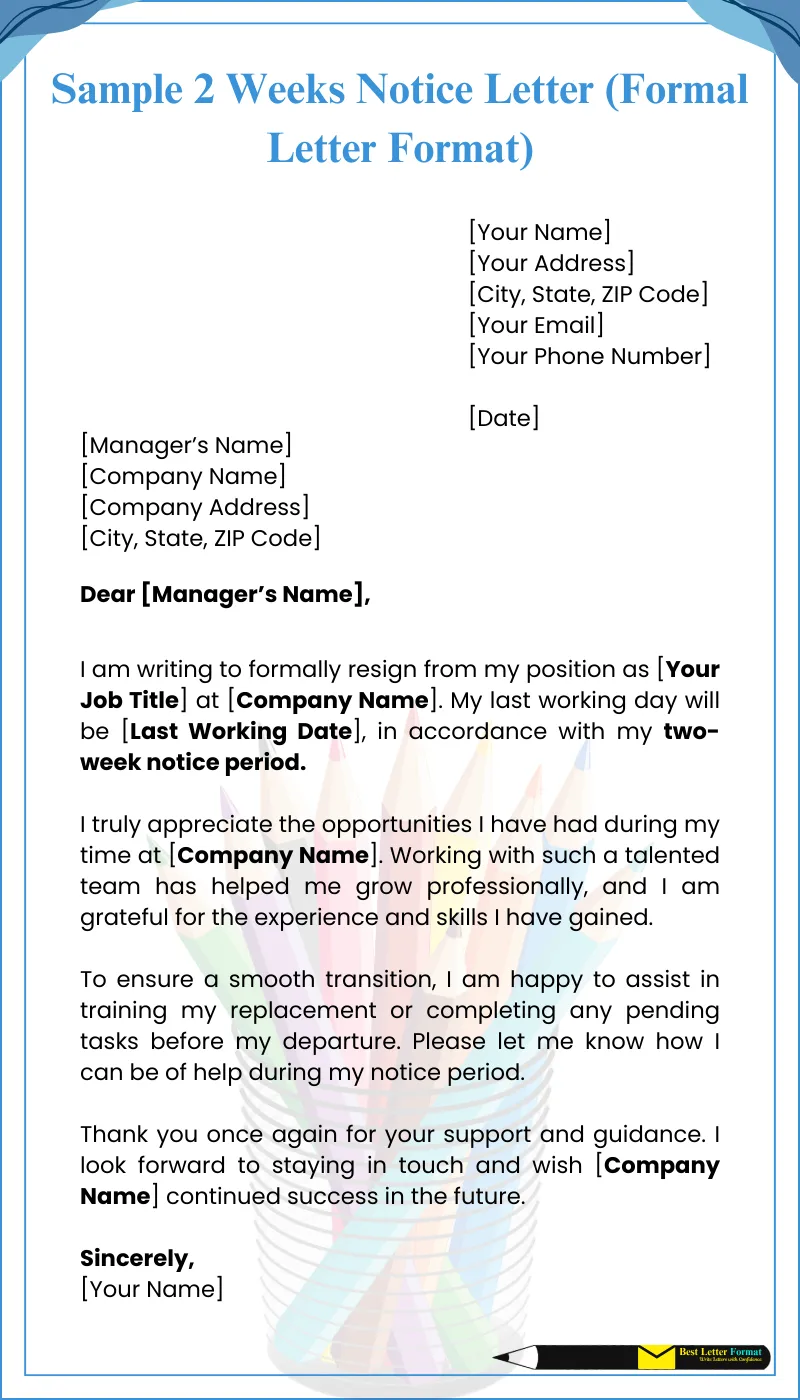
Sample 2 Weeks Notice Email (Email Format)
If you’re resigning via email, it’s important to keep things clear, professional, and polite while still maintaining a natural tone. Below is a sample that you can easily tweak to match your situation.
Subject: Two Weeks’ Notice – [Your Name]
Dear [Manager’s Name],
I hope you are doing well. I am writing to formally submit my resignation from my position as [Your Job Title] at [Company Name]. My last working day will be [Last Working Date], as per my two-week notice period.
I want to express my gratitude for the opportunities I’ve had at [Company Name]. Working here has been a valuable experience, and I appreciate the support, guidance, and professional growth I have gained under your leadership.
To ensure a smooth transition, I am happy to assist in wrapping up my responsibilities and helping with any necessary handovers. Please let me know if there is anything specific you’d like me to focus on during my final two weeks.
Thank you again for everything. I hope we can stay in touch, and I wish you and the team all the best moving forward.
Best regards,
[Your Name]
[Your Email]
[Your Phone Number]
Common Mistakes to Avoid When Writing a 2 Weeks Notice Letter
Writing a 2 weeks notice letter seems simple, but small mistakes can leave a bad impression. To ensure a smooth and professional exit, avoid these common errors:
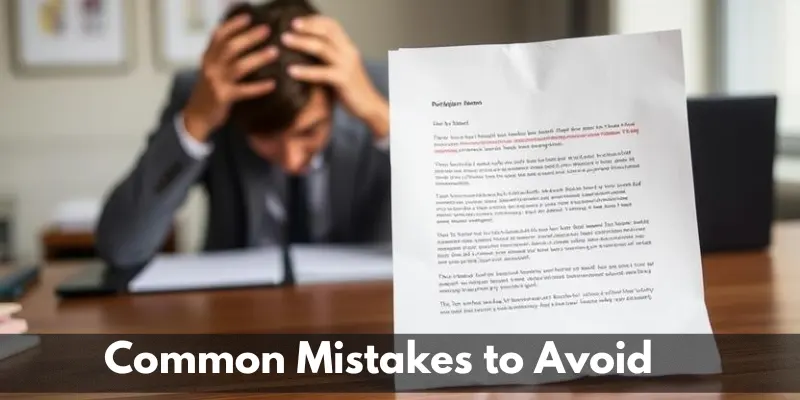
1. Not Clearly Stating Your Resignation
- Be direct and state your last working day clearly.
- Example: “I am resigning from my position as [Job Title] at [Company Name], with my last working day on [Date].”
2. Using a Negative or Emotional Tone
- Keep it professional and polite, even if you had a bad experience.
- Example: “I appreciate the opportunities I’ve had at [Company Name].”
3. Ignoring the Company’s Notice Policy
- Some companies require more than 2 weeks’ notice—check your contract.
- If you can’t fulfil the full notice, discuss it with your manager.
4. Forgetting to Offer Help
- Offer to train your replacement or wrap up pending tasks.
- Example: “I’m happy to assist in the transition to ensure a smooth handover.”
5. Sending an Unclear Email Subject Line
- Use a clear and professional subject line.
- Example: “Two Weeks’ Notice – [Your Name]”
6. Failing to Proofread
- Check for typos and grammar mistakes before sending your letter.
- Read it aloud or use a spell-check tool to avoid errors.
7. Being Too Casual
- Even if you’re close to your boss, keep your letter formal.
- Example: “Dear [Manager’s Name], I am formally resigning from my role as…”
8. Not Keeping a Copy for Your Records
- Always save a copy of your resignation letter for reference.
FAQs About Writing a 2 Weeks Notice Letter for Work
Resigning from a job can feel overwhelming, and you probably have some questions about the right way to write a 2 weeks notice letter. Here are the most common questions and answers to help you navigate the process smoothly.
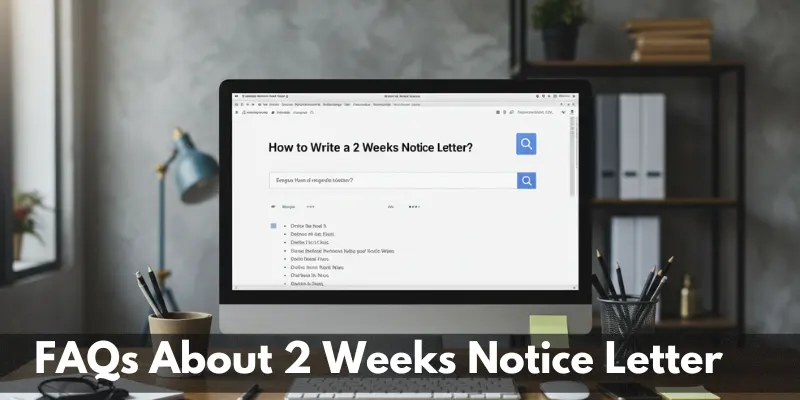
Yes, in most cases, 2 weeks’ notice is the standard practice, but it’s always good to check your employment contract or company policy. Some companies require more notice, while others might let you leave sooner if necessary.
- Yes, many companies accept resignation via email, especially if you work remotely.
- Just make sure your email is professional, includes a clear subject line, and follows the same structure as a formal letter.
Your letter should be short, clear, and professional. It must include:
- A clear statement of resignation
- Your last working day
- A thank you message for the opportunity
- An offer to assist during the transition
No, it’s not required to mention why you’re leaving. If you prefer, you can simply state that you’re resigning without giving any details. However, if you feel comfortable, you can briefly mention that you’re moving on to a new opportunity.
- Some employers may view it negatively, and it could affect your future references.
- It’s always best to give proper notice unless there’s a serious reason preventing you from doing so.
- If you can’t give full notice, try to communicate your reasons professionally and respectfully.
Yes, if possible. Speaking with your boss first is a sign of professionalism and prevents surprises. It also gives you a chance to discuss your transition plan before making it official in writing.
- Some companies may ask you to leave right away, especially in sensitive roles.
- Be prepared for this possibility and make sure you have a plan in case your last day comes sooner than expected.
Absolutely! While the letter should remain professional, you can personalize your thank-you message by mentioning specific skills you gained, projects you enjoyed, or how much you appreciate your team.
Yes! Offering to help during your last two weeks shows professionalism and goodwill. You can say something like:
“I am happy to assist in training my replacement or wrapping up any ongoing projects before my departure.”
- Continue working professionally until your last day.
- Help smooth the transition by finishing tasks or training a replacement.
- Stay in touch with colleagues to keep strong professional connections.
Conclusion
In this guide, we’ve covered everything you need to know about how to write a 2 weeks notice letter for work in a way that leaves a positive impression on your employer and ensures a smooth exit. By following the steps outlined, you’ll be able to resign with professionalism and courtesy.
Here’s a quick summary of what we’ve covered:
- When to submit your 2 weeks’ notice to align with company expectations.
- Key elements to include in your letter such as clear resignation statement, gratitude, and willingness to help during the transition.
- A step-by-step guide on structuring the perfect resignation letter.
- Common mistakes to avoid while writing your letter to ensure professionalism.
- A sample letter you can refer to while writing your own resignation letter.
Now that you’ve learned how to write a 2 weeks notice letter for work, it’s your turn to share your thoughts!
- What have you learned from this guide?
- How did you find the tips for writing your resignation letter?
- If you found this guide helpful, share it with others who might need it!
- Drop a comment below to let us know how you’re planning your resignation. We’d love to hear your experience!
Thank you for reading, and we wish you the best of luck in your future endeavors!

- Be Respectful
- Stay Relevant
- Stay Positive
- True Feedback
- Encourage Discussion
- Avoid Spamming
- No Fake News
- Don't Copy-Paste
- No Personal Attacks

- Be Respectful
- Stay Relevant
- Stay Positive
- True Feedback
- Encourage Discussion
- Avoid Spamming
- No Fake News
- Don't Copy-Paste
- No Personal Attacks








